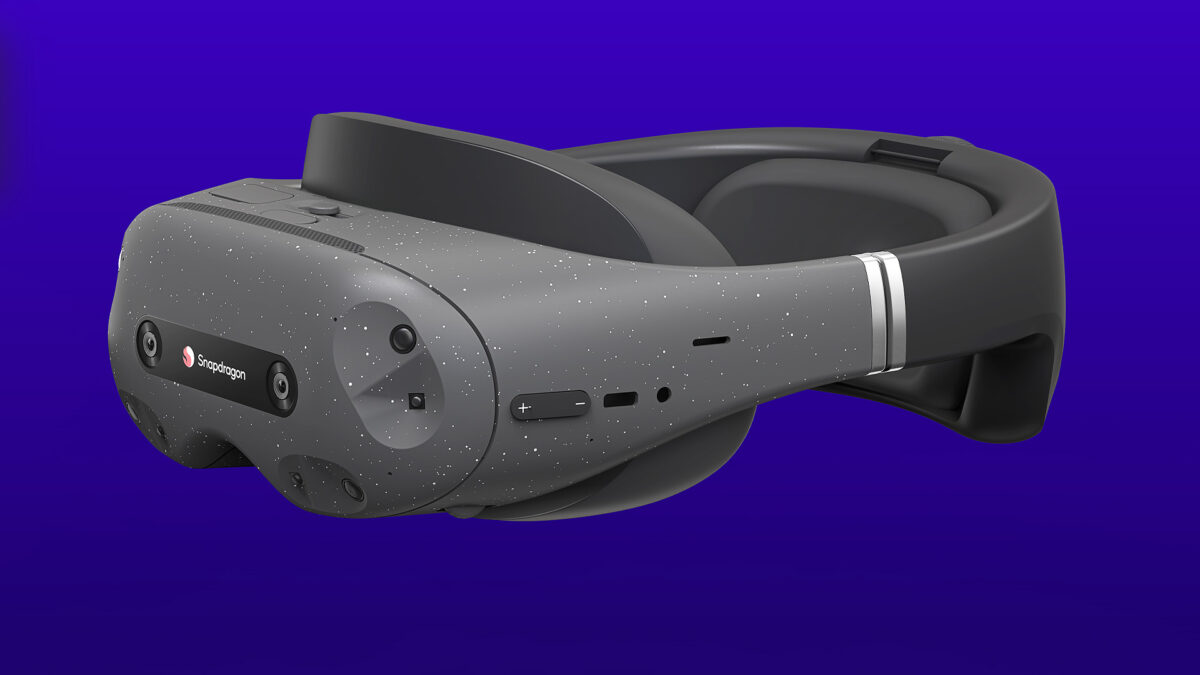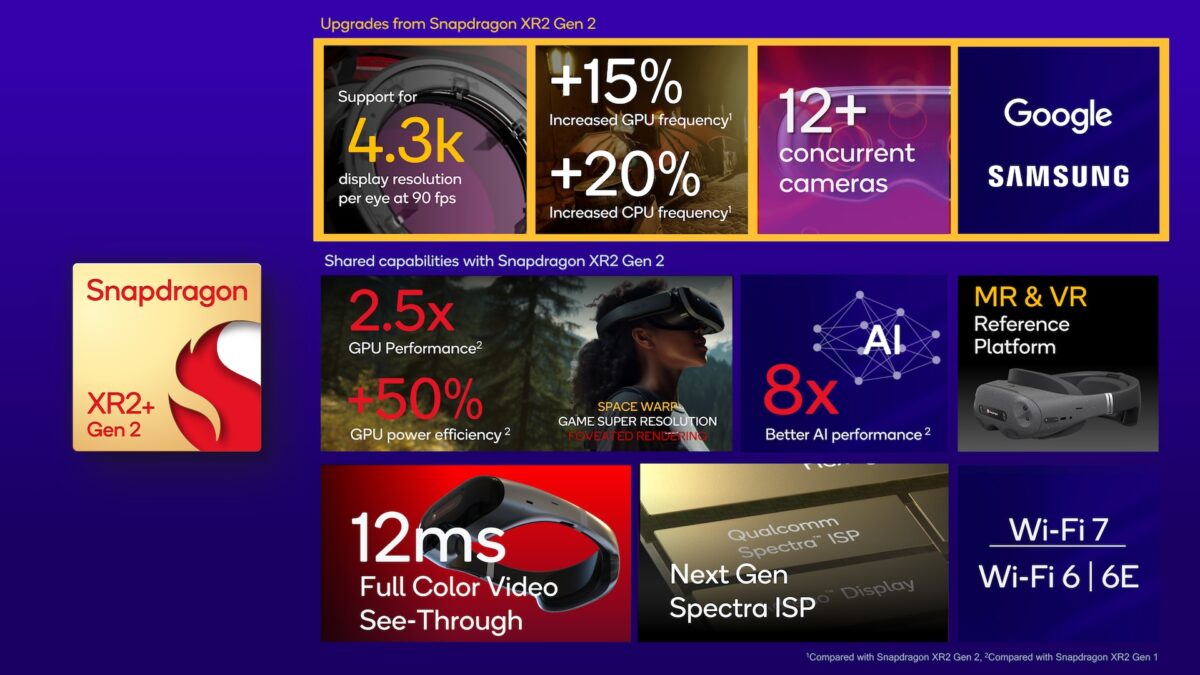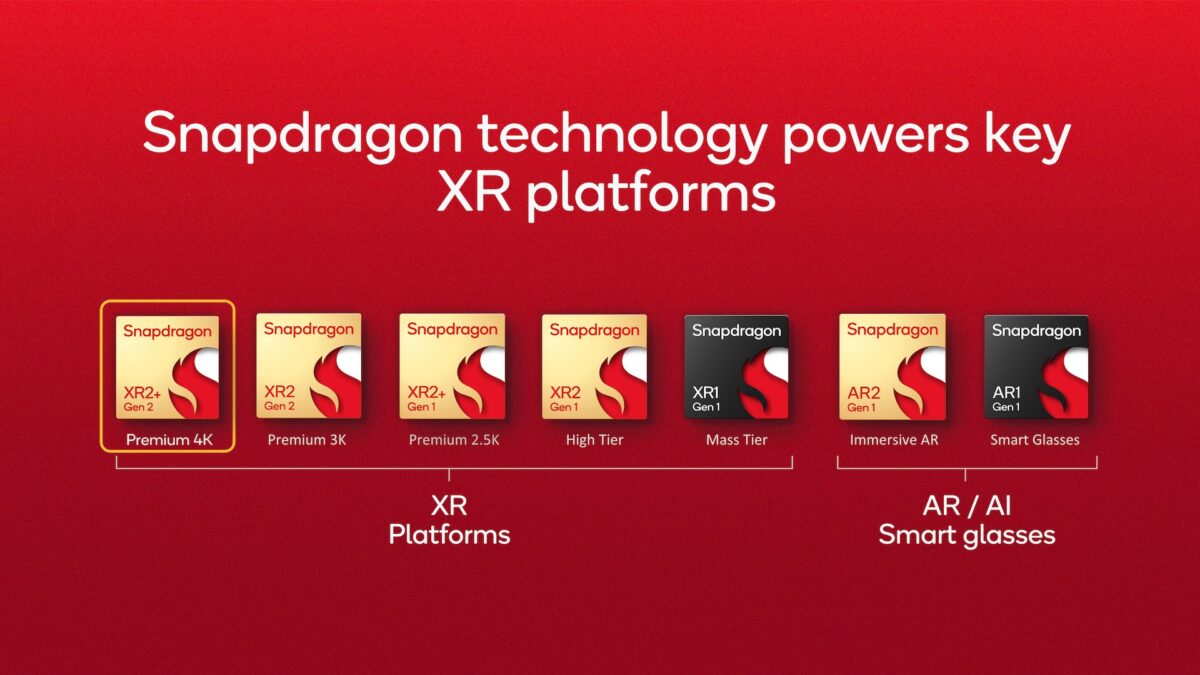Qualcomm's new XR chipset is faster than Quest 3's

Qualcomm's Snapdragon XR2+ Gen 2 will power Samsung's mixed reality headset and answer to Apple's Vision Pro.
Qualcomm today unveiled a new premium chipset for standalone mixed reality headsets: the Snapdragon XR2+ Gen 2.
The announcement comes a few months after the launch of the Snapdragon XR2 Gen 2, which made its debut in Meta Quest 3.
Anyone looking forward to an XR version of the Snapdragon Elite X desktop tier chipset will be disappointed: The Snapdragon XR2+ Gen 2, as the "+" makes clear, is not a generational leap, but only a marginal improvement over the Snapdragon XR2 Gen 2. It supports:
- Displays with up to 4.3K resolution per eye at 90Hz refresh rate; with Snapdragon XR2 Gen 2, the maximum resolution is 3K per eye.
- Support for 12 or more simultaneous cameras and sensors, compared to 10 on the Snapdragon XR2 Gen 2.
- 20% increased CPU frequency and 15% increased GPU frequency compared to Snapdragon XR2 Gen 2.
Five OEM partners are working on headsets
The chipset was developed in collaboration with Samsung and Google and will be used in an upcoming mixed reality headset and Apple Vision Pro competitor. According to a report, the product could be released in a very limited quantity of 30,000 units at the end of 2024.
Qualcomm has also unveiled a new reference design for OEMs developed by Goertek (see article image) that incorporates eye tracking from Tobii. The reference design supports both the Snapdragon XR2 Gen 2 and Snapdragon XR2+ Gen 2 chipsets.

The features of the Snapdragon XR2+ Gen 2 at a glance. Improvements compared to the XR 2 Gen 2 are outlined in yellow.
One of the advantages of the higher resolution is that text is easier to read, Qualcomm said in a press call. The company did not want to reveal the price segment in which future headsets could operate. This would depend on the individual headset configurations of the OEMs.
According to Qualcomm, more than 5 OEMs are working on devices with the Snapdragon XR2+ Gen 2, including Samsung, HTC Vive, Immersed and Play for Dream (formerly YVR). The fifth partner, which is still unknown, will unveil its product on January 8.

Qualcomm's portfolio of specialized XR and AR chipsets. | Picture: Qualcomm
"We look forward to continuing our collaboration with Qualcomm Technologies and Samsung on the
future of immersive and spatial XR," said Shahram Izadi, vice president of AR at Google. "With Samsung's mobile expertise and our joint commitment, we aim to create the best-in-class XR experience for Galaxy users," said Inkang Song, vice president and head of technology strategy team at Samsung Electronics.
The battle of Android vs. iOS continues on the XR level
Apple Vision Pro will first be released in the U.S. in early 2024, and it currently looks like the Android trio of Qualcomm, Samsung, and Google will take a while to respond.
In terms of performance, Apple is ahead of the game: in addition to the new R1 chipset, which is solely responsible for processing sensor data, Vision Pro also uses the M2 chipset, which is used in Macbooks, among others, and on paper outperforms Qualcomm's Snapdragon XR2+ Gen2.
However, it remains to be seen how much performance Vision Pro can really squeeze out of the M2 chip. The bottleneck in standalone headsets is not the CPU or GPU performance of the chips, but the efficiency and thermals. Even if Qualcomm releases an XR chip on the level of the Snapdragon X Elite in the future, its performance will be limited by these factors.
Note: Links to online stores in articles can be so-called affiliate links. If you buy through this link, MIXED receives a commission from the provider. For you the price does not change.